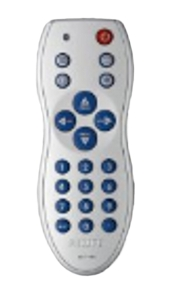Displays can do much more than showing numbers
Displays can do much more than showing numbers. They support other components of the CANopen bus with memory; they even perform as interface to passengers and service engineers.
You probably know all about CANopen and its individual items. You know the benefits and its limits. And now you will learn about one device which appears rather minor in the beginning and will proof to be essential and beneficial for all other components in the end: The display. Any news so far? A display indicates the floor level. And it can play a voice message. And it comes with an accelerometer. And it will have lots of excessive memory. Curious how this will work for the bus? Please allow an example:
Debris is blocking the door so it will not close. The display can inform the passenger about the reason for this breakdown. Any skilled person can now inspect the floor rail himself, detect the small stone and remove it. The door will close and the lift will run. What’s the story behind it? Just imagine the passenger had not been informed by the lift: He would be annoyed about the lift not working, the warden had to call a service engineer, the trouble shooter had to interrupt his routine and come out for a visit. This service engineer had to read the error stack of the controller and had eventually to remove the stone. This would take hours of waiting and paying for. A simple indication “DOOR BLOCKED” takes less than a minute to get the lift running again for free! To take this one step further: The voice message played could even read out short instruction for this passenger.
Let us now develop this idea of message transmission one step further. Any text message generated by the controller can be used to inform the service engineer optically and acoustically at side. He will not need to link into the controller to find out. Every item of CANopen can directly feed its information into the display. Overload? You will know immediately. Service required? Unusual noise development? Poor levelling? Motor drive? Door drive? Group controller? You name it... In practice this will work even easier: Take any universal remote control costing less than ten Euros, set it to emulate a Philips TV, and point it to the floor display in the car.

Now the service engineer can see or hear all information in the TFT from the controller. Not surprisingly you can also set the volume or change the recorded messages or language of the voice announcer.
Most components will generate a lot of data in the bus system, but only few will provide memory to store this real-time information. This display will make a lot of memory available to these components by its 2 GB micro-SD-card. Now the bus does not only have a presence, but also a past to prepare for a great future. This stored information is now available to all components on the bus. To repeat this: The display can monitor all inputs and outputs, all movements and all speeds of cars and doors, all faults and all the passenger / user inputs. The SD card could be used to show every move or state of the lift any time of the past months.
The Display comes also with an accelerometer. This will allow monitoring the lift movements, vibrations and noise. One could detect a worn out roller guide or broken bearing in the door operator. One could even detect if the guide rails are not properly lubricated. And an additional feature will make the whole system safer: The system can detect any unwanted movement of the car if doors are open.
Displays as rather minor components in the CANopen family? Maybe they are small in size, but they are great in performance. Please bear in mind that none of the above mentioned features could be used without the CANopen bus. The cooperation will allow for smaller companies to join in the development of highly advanced solutions that can compete and even surpass the Big 4 on the high level development of the future. This demonstrator with lots of components working in perfect harmony is the best evidence.